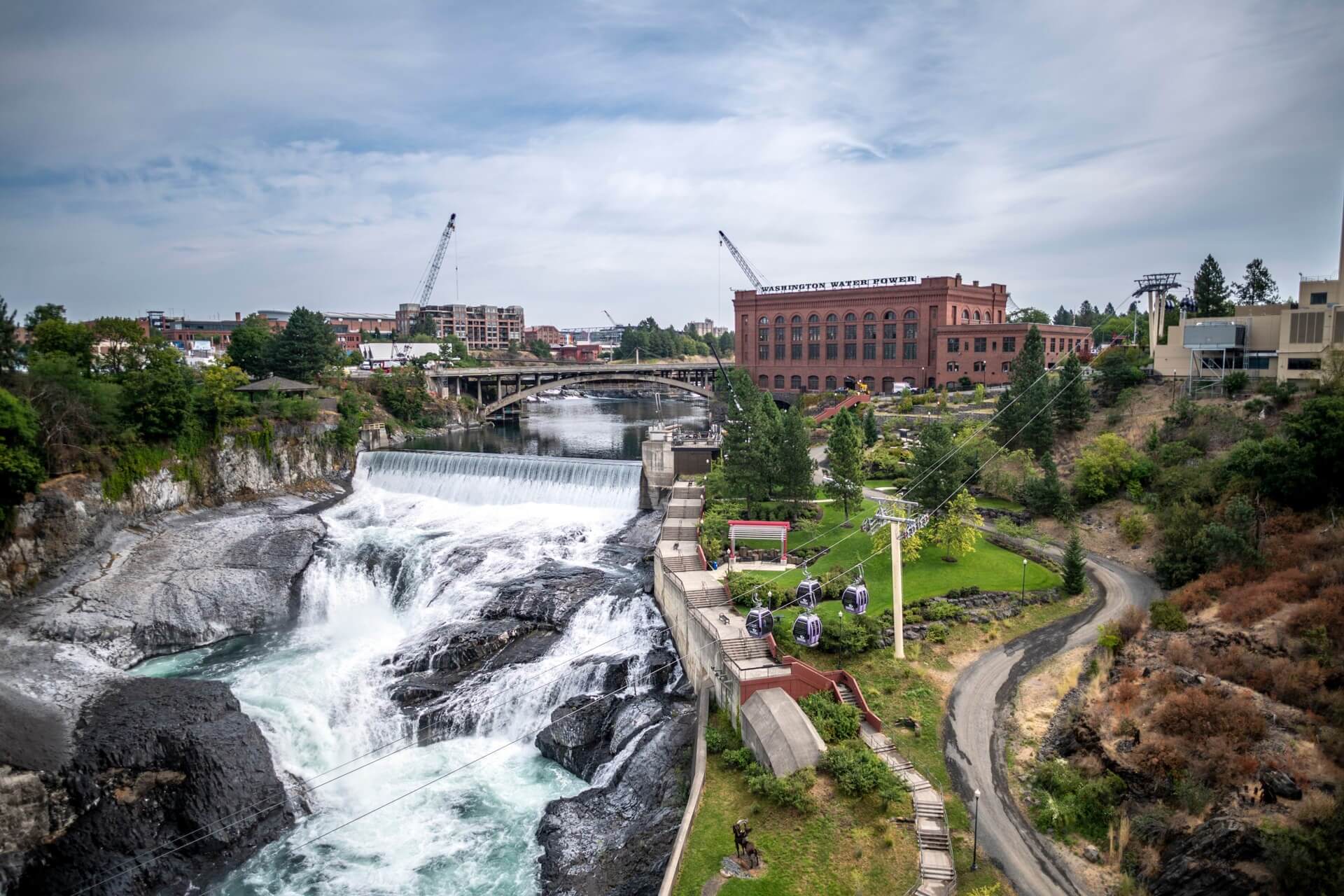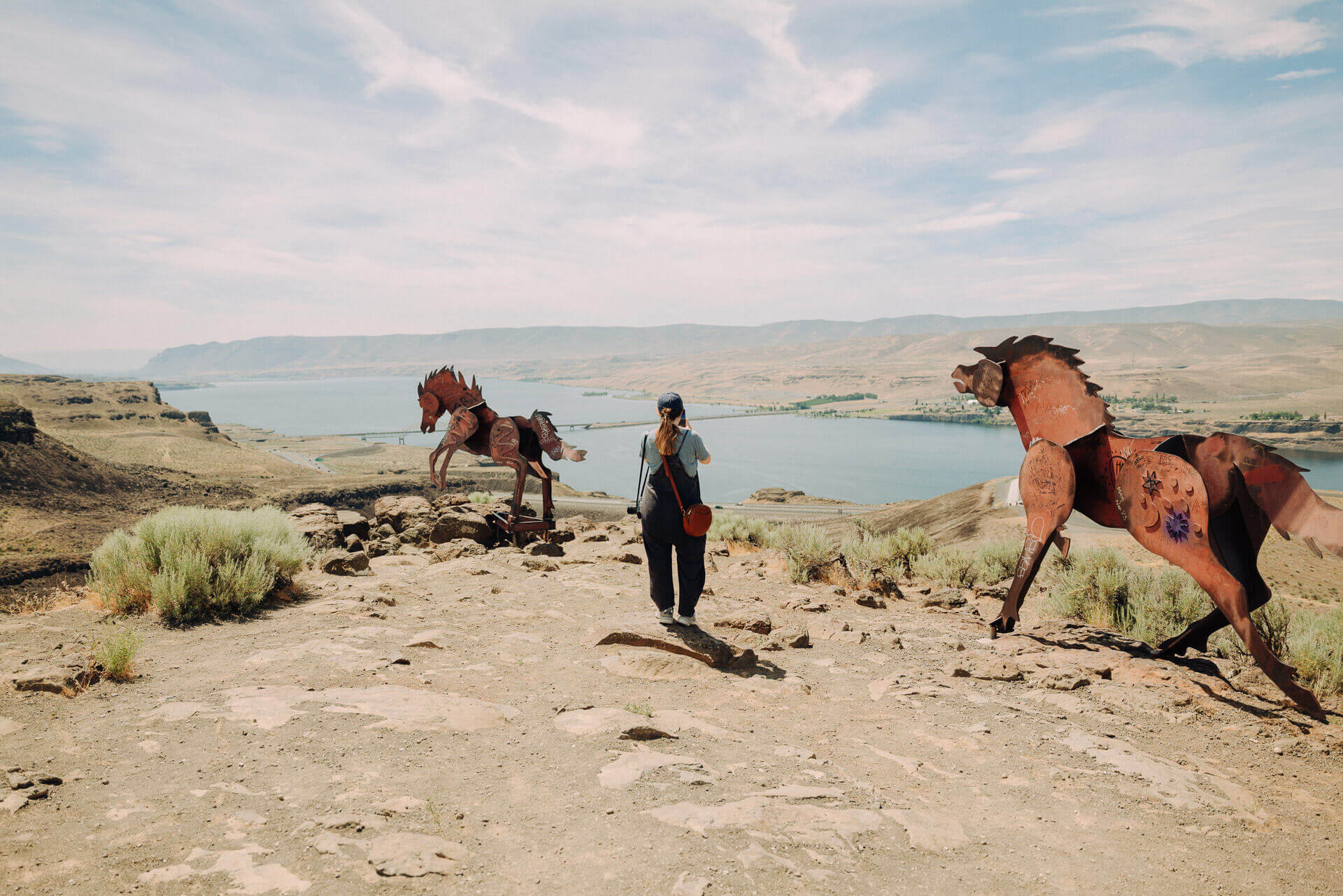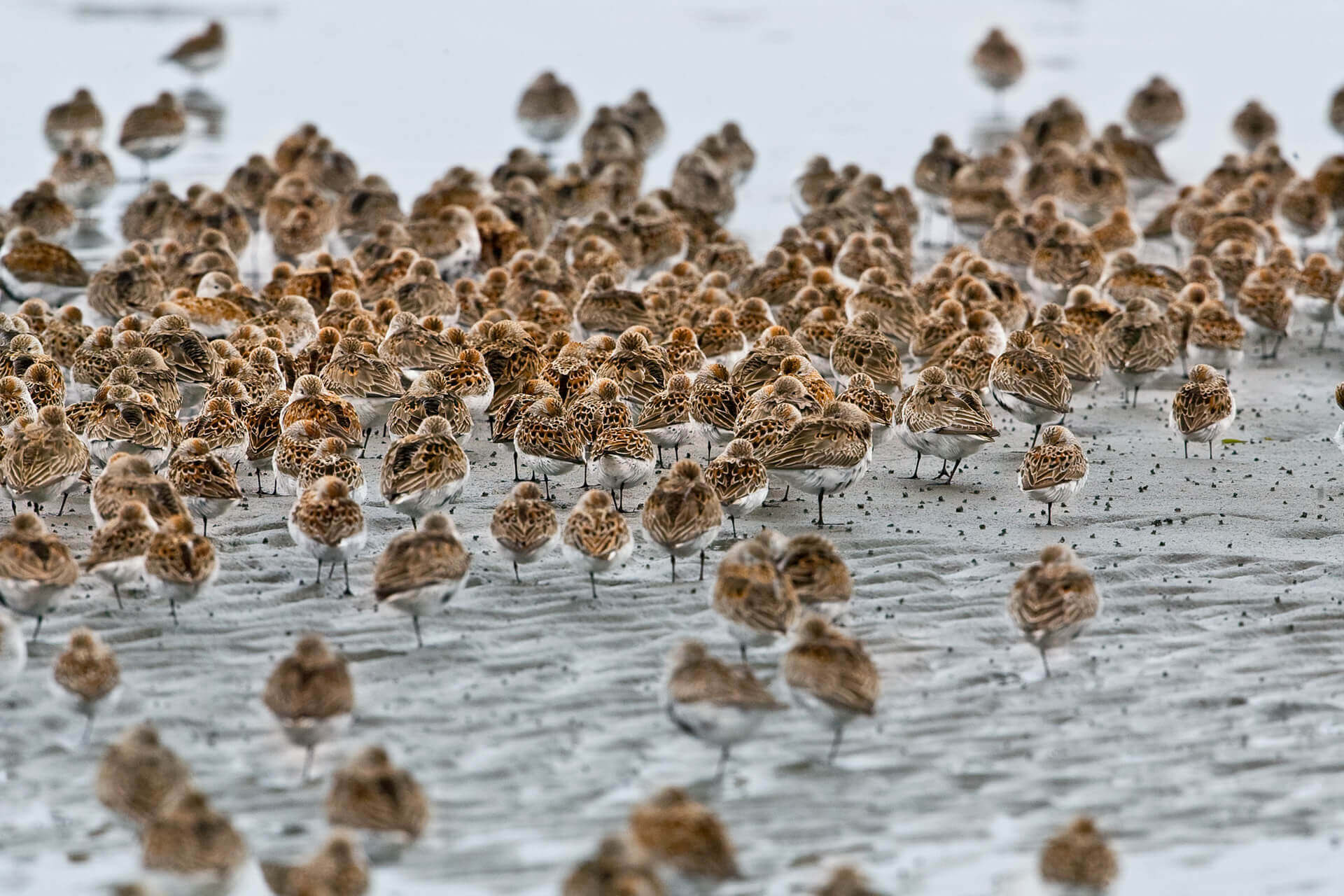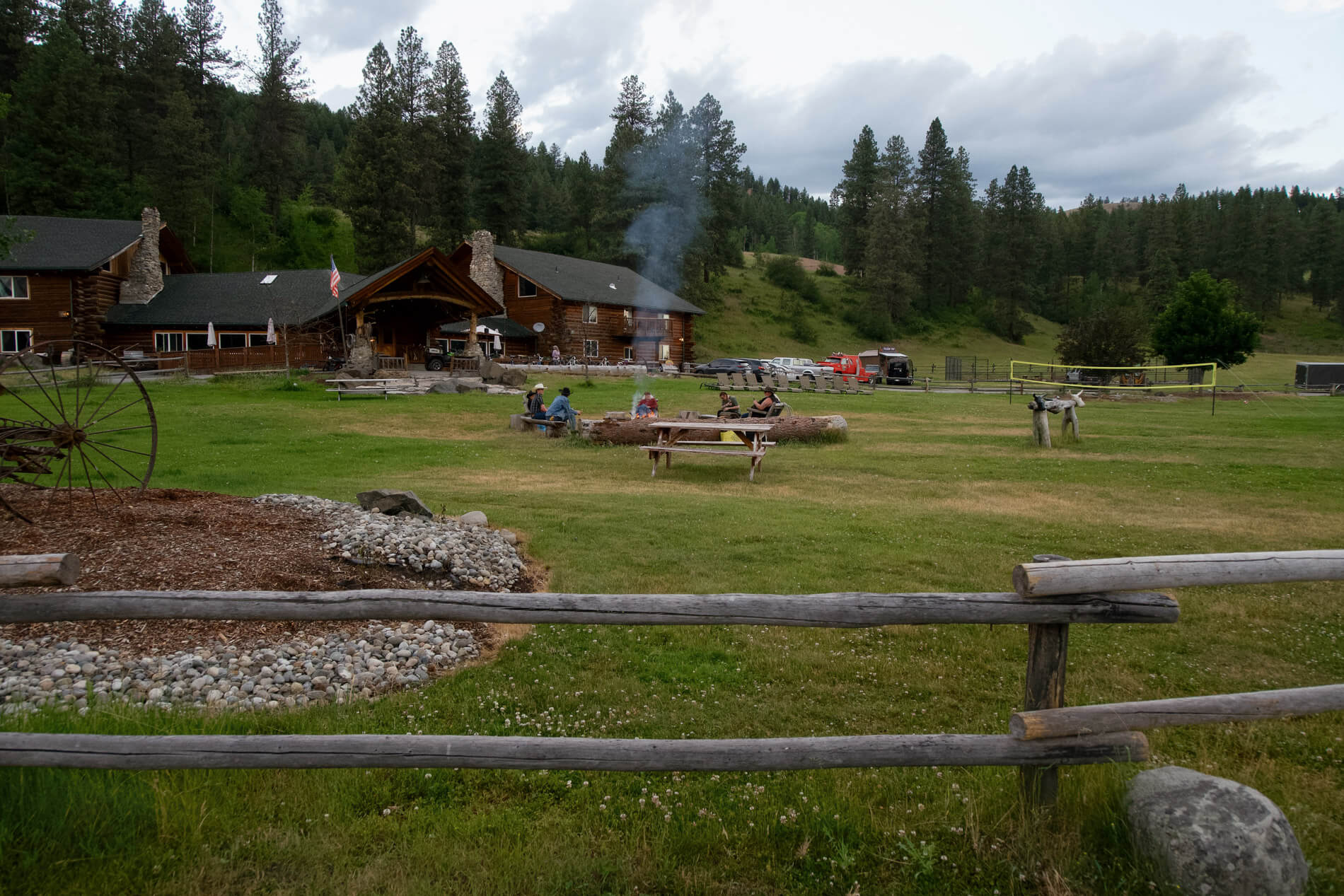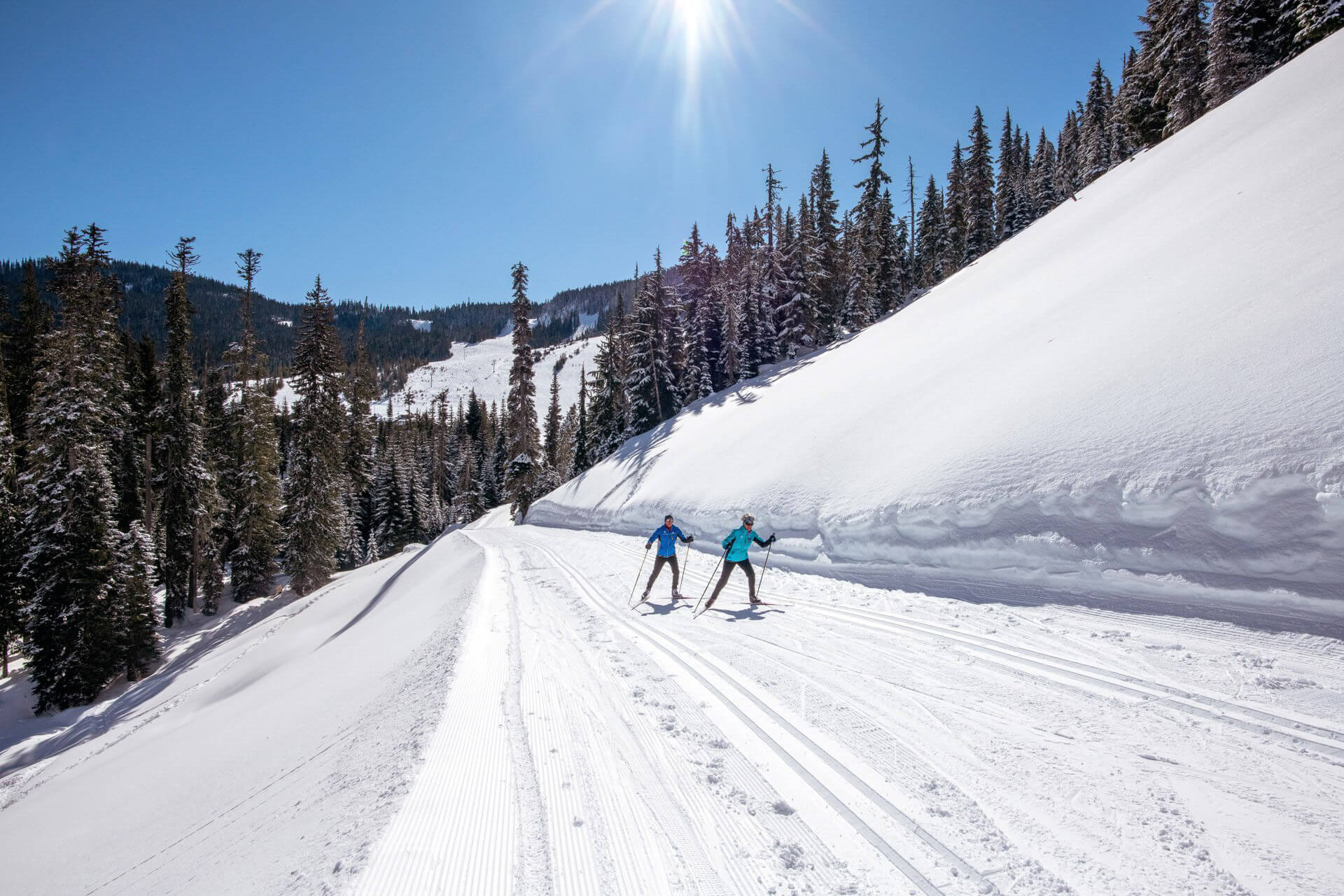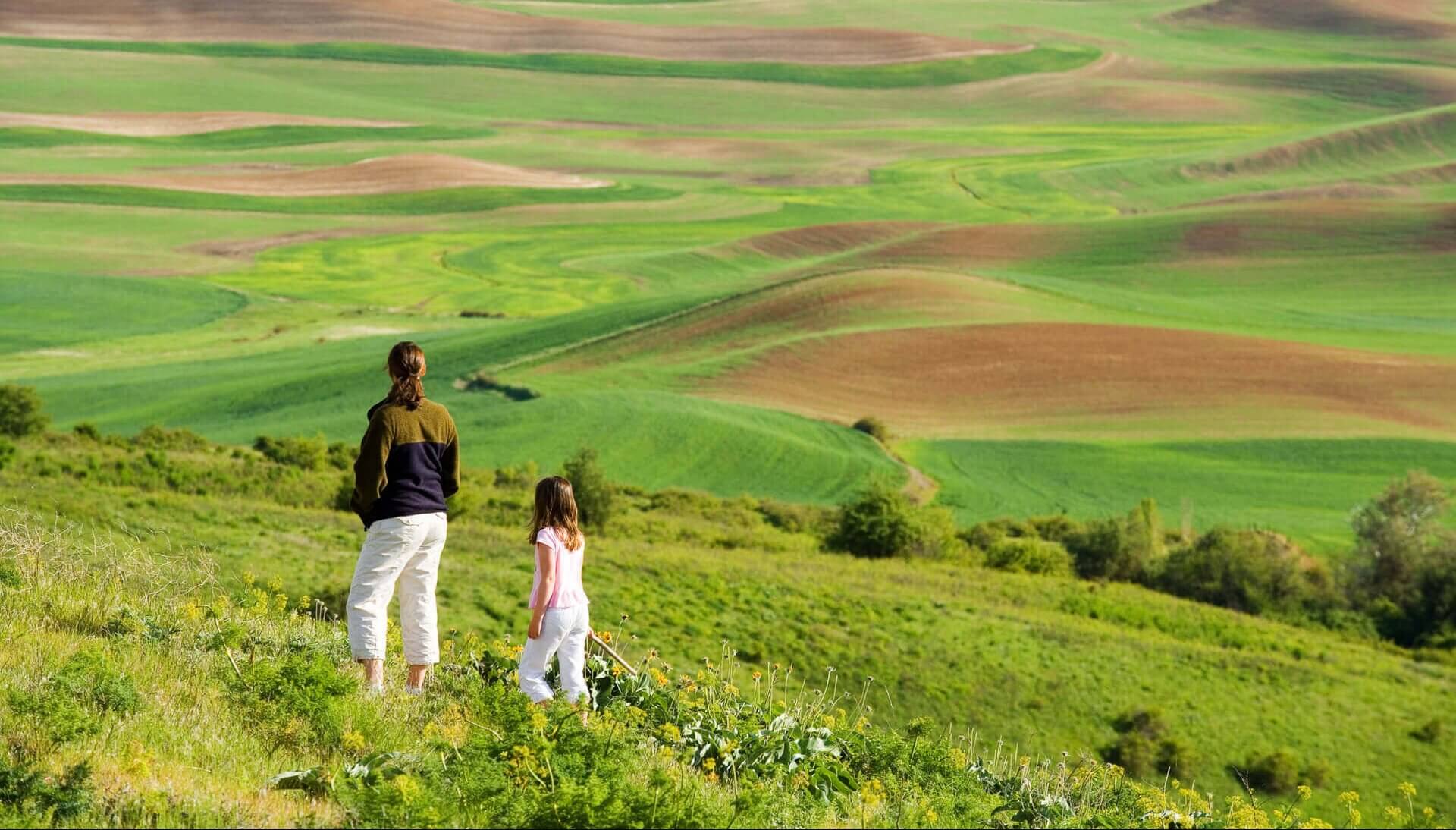
Home to Spokane, Washington’s second-largest city, the Eastern Region of Washington State stretches north from the Canadian border down to Pullman and the rolling hills of the Palouse, bordered to the east by Idaho. Discover scenic byways, rolling farmland, charming towns, and more in this corner of Washington State.
Airports: Major airports in Washington’s Eastern Region include Spokane International Airport (GEG), and Pullman-Moscow Regional Airport (PUW). Nonstop flights are available to both from Seattle–Tacoma International Airport (SEA).
Major Highways: I-90, US-2, US-195
Climate/Seasonality: Eastern Washington has hot summers (June–September) and cold winters (November–February with snowfall.
Eastern Washington Highlights
- Riverfront Park and Spokane Falls, the country’s largest urban waterfall
- Palouse Scenic Byway
- National Lentil Festival in Pullman
- Mount Spokane State Park, Washington’s largest state park
- Digging for dinosaur fossils in Republic
- Ghost towns like Sherman and Govan
- Palouse Falls, the state’s official waterfall
- Gardner Cave, one of Washington’s longest limestone caves
Eastern Washington Destinations
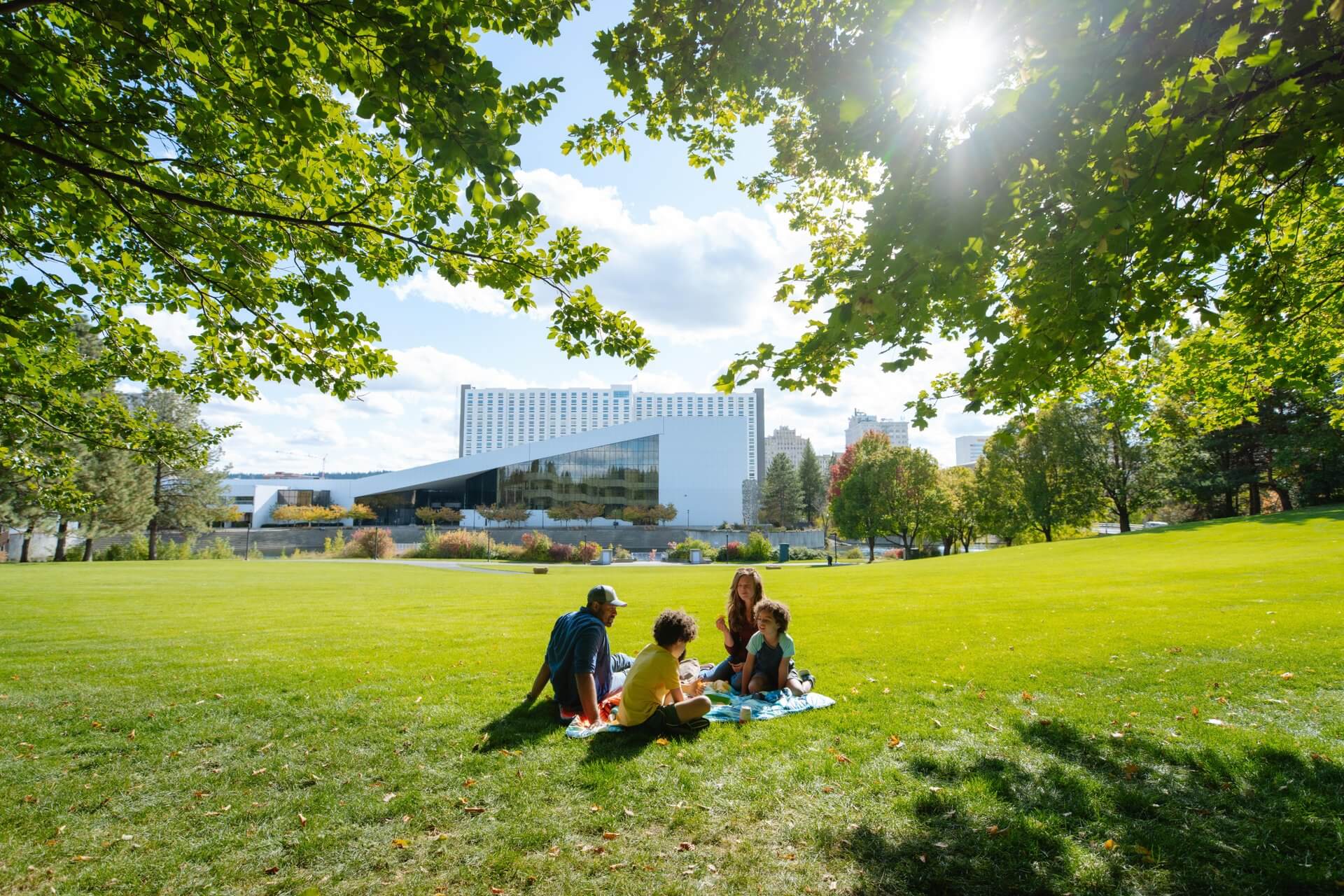
Spokane & Spokane Valley
From outdoor adventure to art, culture, and culinary offerings, Spokane has plenty to do year-round. Discover an urban oasis in 100-acre Riverfront Park, where the Spokane River creates the largest urban waterfall in the country. Take a ride over the falls on a gondola, wander Spokane’s districts in search of antique shops, or head to local farms in Green Bluff for wine tasting. Nearby, Mount Spokane State Park boasts an extensive trail network, and skiers and snowboarders flock to its fantastic ski areas in the winter. Spokane and the greater Spokane Valley are an especially easy getaway from Coeur d’Alene, Idaho.
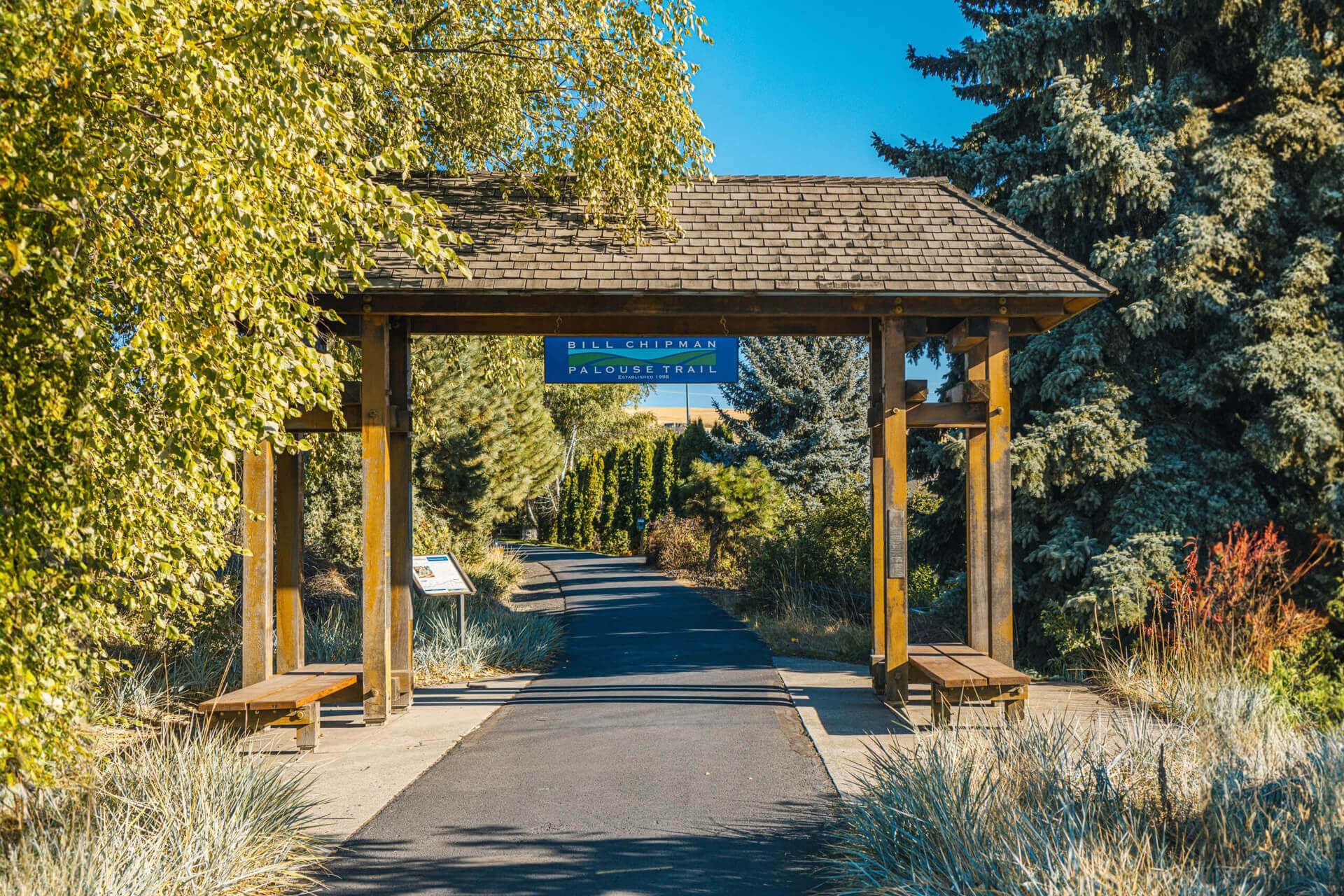
Pullman
Nestled in the heart of the Palouse—a geographic region known for its rolling hills, Pullman beckons visitors with a laid-back vibe. Home to Washington State University (WSU), this college city is known for its easy access to the expansive Palouse Scenic Byway and agricultural roots. Each summer, the city hosts the National Lentil Festival, which celebrates the region’s tasty crop with cooking demos and more. From college football to famous Cougar Gold cheese to outdoor recreation, there’s plenty to do in Pullman.
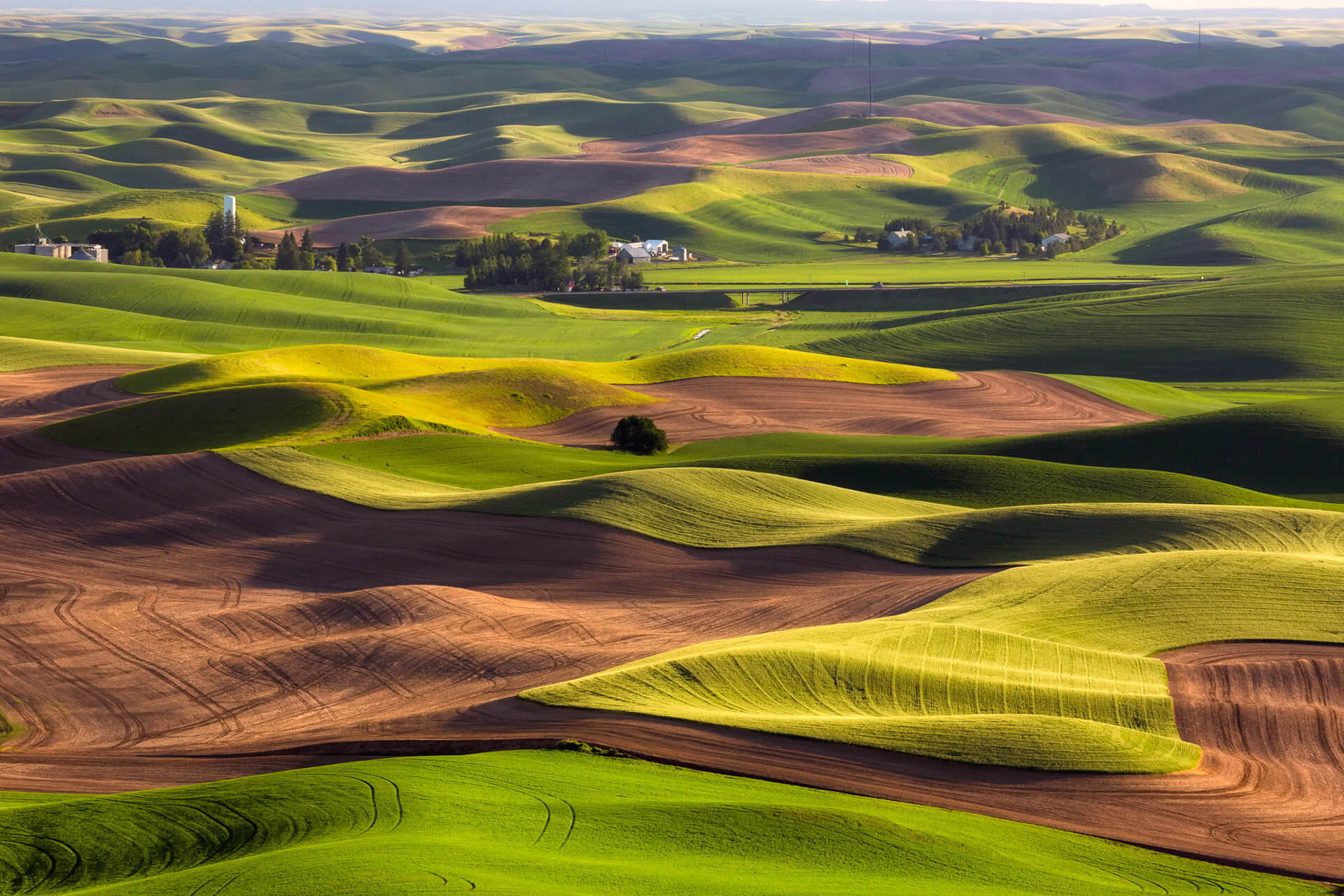
Palouse Scenic Byway
Disconnect and discover a photographer’s paradise among the rolling hills of the Palouse Scenic Byway. The area’s mineral-rich soil is ideal for growing wheat, which colors the landscape in rich shades of green in the spring and gold, brown, and mauve in summer. Hike to the top of Kamiak Butte, a quartzite rise that towers 1,000 feet above the surrounding wheat fields of Eastern Washington.
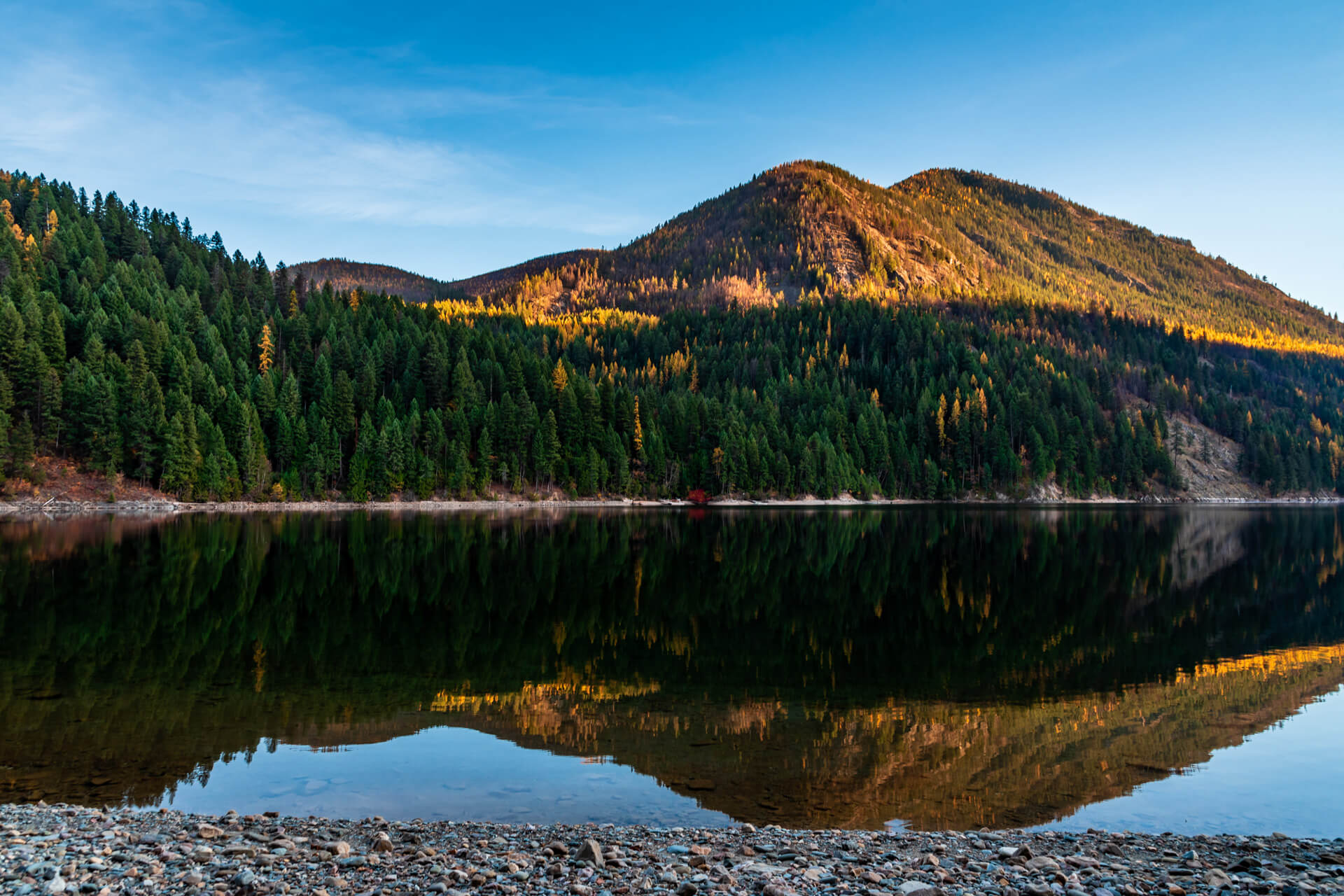
North Pend Oreille Scenic Byway & Colville National Forest
Drive the North Pend Oreille Scenic Byway and discover a portion of the International Selkirk Loop in Eastern Washington. Stop into small towns or tour Gardner Cave, one of Washington’s longest limestone caves. The byway passes through parts of Colville National Forest, which spans 1.5 million acres and includes the Kettle River, Selkirk Mountains, and the upper reaches of the Columbia River. Visitors can enjoy camping, hiking trails, mountain biking, watersports, and wildlife viewing.
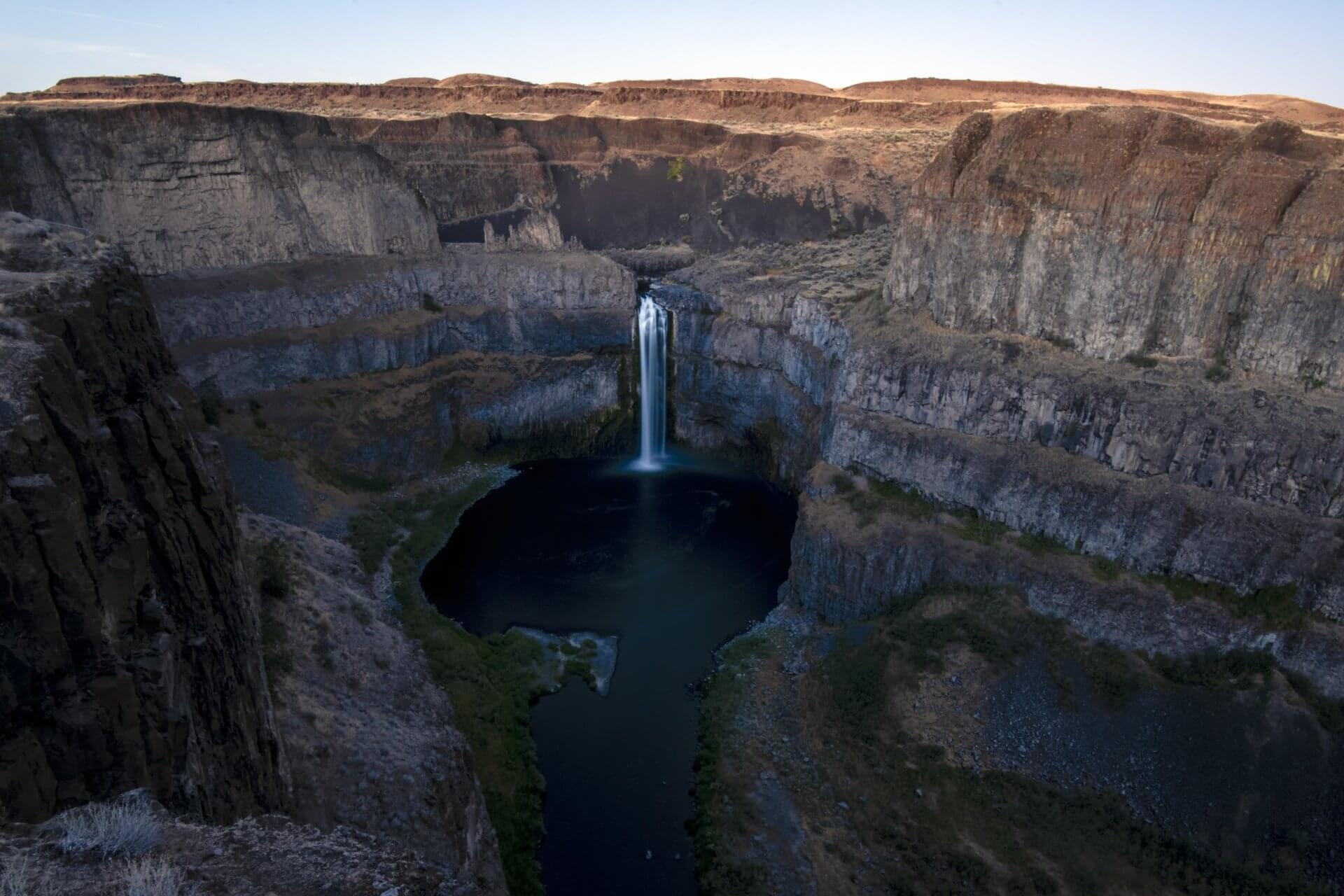
Palouse Falls
Head west of Spokane and Pullman to see Palouse Falls, Washington’s official state waterfall. This stunning natural attraction in Palouse Falls State Park cascades down 198 feet to the Snake River. A popular destination for birders, visitors can also enjoy three distinct viewpoints of the falls.

Small towns
Try your hand at digging for fossils in Republic or visit Cheney, a college town with youthful energy and easy access to outdoor recreation. Chewelah charms with its arts scene, golf courses, and nearby ski area. Newport, located near the Idaho border, sits along the Pend Oreille River and offers fishing, boating, and forested escapes.
